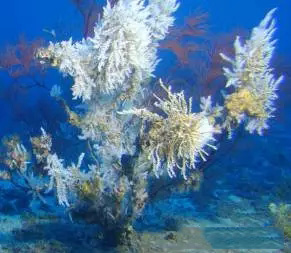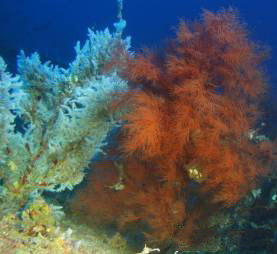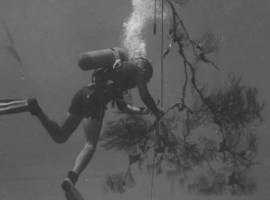Black corals are found worldwide in oceans from polar to tropical regions, and have a wide distribution range from 2 meters to 8600 meters deep. Despite this wide range, black corals are mainly found in deeper waters, with more than 75% of known species only below 50 meters. At these depths, black corals are often abundant, predominant animal components and create habitats for countless associated organisms.

In Hawaii, black coral is especially important, not only from an ecological point of view, but also economically and culturally. First, black corals are the main habitats that form in deep-sea reefs in Hawaii, where they are affected by strong currents. Second, Hawaii is the only place in the U.S. where black coral is commercially fished for its precious coral jewelry, and the only one in the world. It's a multi-million dollar business that employs nearly 650 people and does manufacturing and retailing across the state. Third, black corals are equally culturally important, as they represent the nation's official gemstone. It is commonly used in medicine in traditional Hawaiian culture. ‘ēkaha kū moana, black coral known in the Hawaiian language, has long been prized by Native Hawaiians for its supposed healing properties for lung disease and mouth ulcers.
Although Hawaiians have used black coral for centuries, only Western scientists discovered black coral in Hawaii in the early 20th century.

Black coral in the Hawaiian Islands was first sampled by a scientific expedition from the U.S. Fisheries Commission in 1902. Using deep-sea trawls and tangle nets, black corals were collected in Hawaiian waters at depths greater than 2,000 meters, although most specimens were collected at depths less than 500 meters. Black coral specimens are kept in the National Museum of Natural History, and until a recent reexamination of these collections has led to the description of many new species, including in Hawaiian waters. In 1928, Verrill formally described the black coral species in Hawaii for the first time. In 1958, an abundance of black coral was discovered on Maui, a discovery that eventually led to the development of a local black coral fishery, as well as extensive research into this group of corals. Scientists, resource managers, and fishermen have worked closely together throughout the history of the fishery, so Hawaii's black corals are among the best studied on a global scale.
Since its inception in 1958, Hawaii's black coral fishery has been provided by divers who collect coral between 40-70 meters, mainly in the channel between Maui and Renai, and on Kaua and Hawaii island of isle. Fishing methods have remained largely the same since the beginning of the fishery, including fishermen scuba diving to the black coral beds, separating them from the substrate with an axe or sled, and bringing the coral back to the surface via lifting bags or anchor lines.

As more and more commercial exploitation of black coral has increased, so has the fishing of black coral. There are surveys that show a decline in the biomass of commercially valuable black corals. This means that without proper management practices, black coral resources will be depleted. It is exciting that the government of Hawaii has proposed management measures for black coral. For example, it restricts people's fishing and so on.
Through ongoing research partnerships among diverse fisheries stakeholders, Hawaiian black coral populations have become some of the best studied in the world, and adaptive management strategies must continue as new scientific information emerges.
From "NOAA"